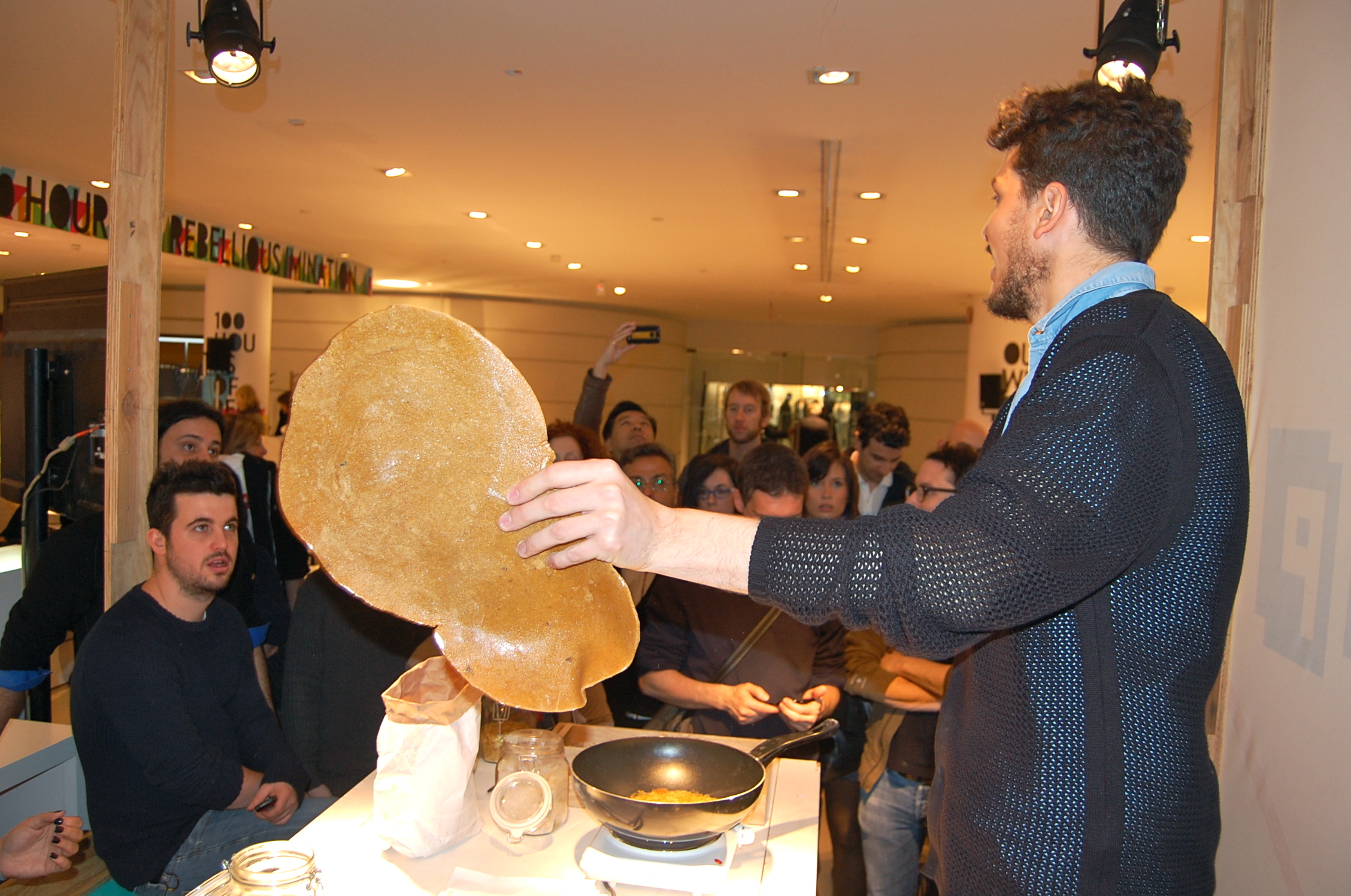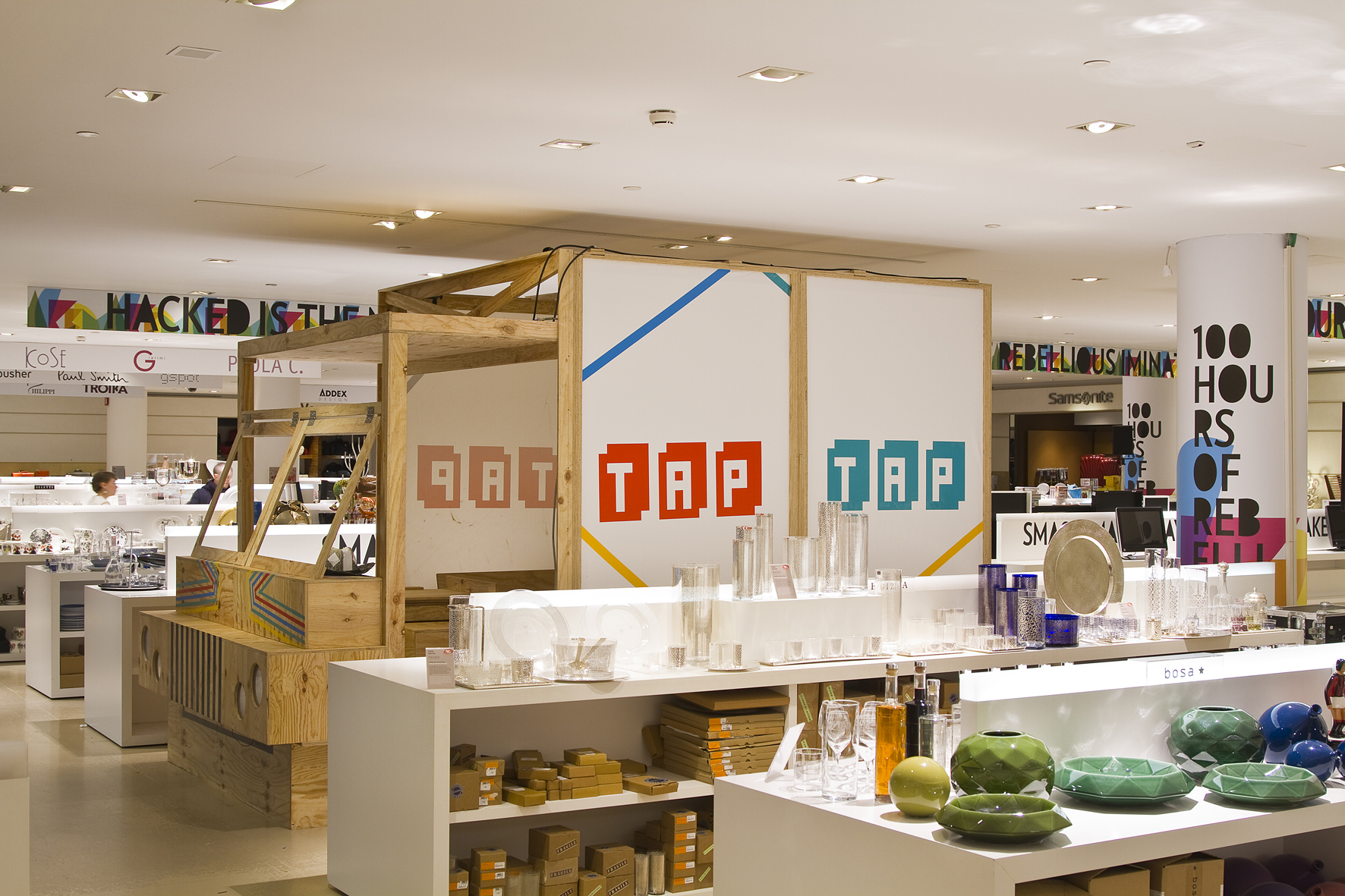Interview with curator Beatrice Gailee
/SSR In which ways did Milan Design Week and la Rinascente inspire your project Hacked?
BG This is my first time working in a shopping mall, and I found a lot of enthusiasm from the people here in Milan. The shopping mall is an exciting place to involve people in the events, which is exactly what ‘hacking’ is about. For me, having to organize so many events, three times a day for the duration of the Milan Design Week is, of course, both challenging and inspiring.
I particularly liked the idea of working during the Salone del Mobile (Design Week) because people come in person to the Salone. They want to be present. People make reservations, buy train and air tickets, they like to really participate in the event. I like the idea of people wanting to be there and to do things. We devote one of the days of the Design Week to laRinascente customers and to the people who will call, everybody is invited to participate. Performances such as ‘make your own thirsty plant detector’ and ‘build your own musical instrument’ are examples of design participation and creative experiments.
 SSR What’s the relation beteween art, design and fashion nowadays?
SSR What’s the relation beteween art, design and fashion nowadays?
BG They are all cultural fields although they involve different roles. But they have a lot of things in common too, interesting forms of collaborations between art, design and fashion are emerging – nowadays it is really about exploring boundaries among different fields. Artists, architects, fashion designers and designers are influenced by each other more and more.
SSR Is hacked somehow questioning also the concept of copyright? Is there any difference between design and fashion concerning copyright (as in fashion you can protect a logo/brand but you cannot protect a style)?
BG This is an interesting question. I think that copyright is becoming less and less important. The whole idea of Author with a capital A is undergoing severe change, challenged by the very act of the creative process. Products are becoming a completely open source. In a way this is liberatory, but, of course, it entails a lot of changes in the way we think about design. The relation between author, producer and buyer (consumer) is no longer a neatly separate one, but there is continuous interchange between these three elements of the process. Traditional authorship of course still exists, I would say it runs in parallel with these new forms of creativity in which the roles are constantly redefined, to set a new form of commerce and patronage. Take for example kickstarter.com – it is an interesting platform devoted to all new ways of funding and following creativity. You can design a dress and then find somebody there who can create it according to your and his or her ideas about making and distributing. You customize the ways in which you can put that dress on the market. For a new generation of designers, the idea of a ‘product’ to be manufactured, distributed and sold in the traditional way is no longer interesting. Using hacking, strategy, fiction, technology, science, performance, play and collaboration as tools of their trade, collections of emerging agents of design have demonstrated a different way to exhibit and experience contemporary design.






